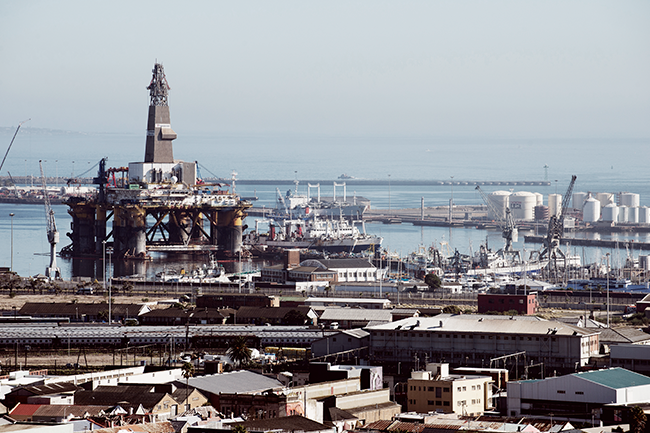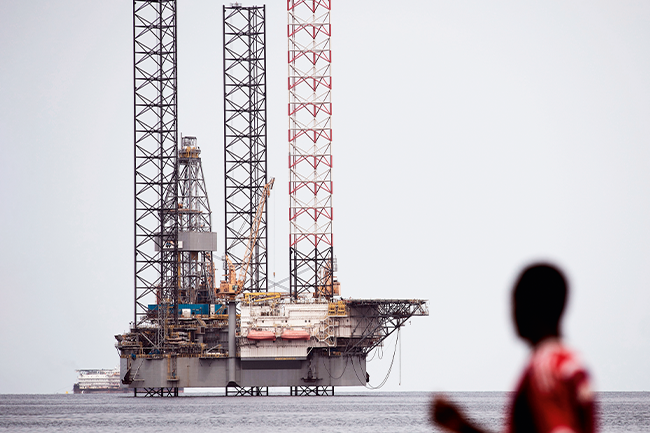Oil and gas is an up down industry. Prices spike and drop, and new technologies come in wave after wave. As energy expert Daniel Yergin explains it, ‘the industry has continually gone through periods of technology changing the business and developing new skills and capabilities, both internally and drawing on the wider benefits of technology, and I think we are in one of those periods’. His comments accompanied a survey by the National, which found that more than a third of oil and gas companies are already investing in big data analytics, while nearly half are investing in the internet of things.
It’s easy to see why. As Mohammed Al Nakhi, HSE lead and technical manager for BP in the UAE, told the same publication, ‘the computer power available today has enabled processing sub surface data in hours and days, instead of months and years. This has enabled teams to make decisions based on current reservoir conditions, which saves costs and improves value’.
What does that look like in practical terms? In December, Daewoo Shipbuilding & Marine Engineering (DSME) signed a joint development project agreement with the American Bureau of Shipping, to explore decarbonisation and digitalisation strategies for their very large crude carriers (VLCC) and ultra large container ships (ULCS). The agreement covers onshore remote monitoring, smart and autonomy technology, and the development and review of cybersecurity aspects associated with the DSME smart ship platform. ‘There is increasing demand in the marine industry for vessels that have a low carbon and greenhouse gas emission footprint. Leveraging digital technologies provides a means to assist in addressing these decarbonisation challenges,’ says DSME chief technology officer Odin Kwon.

‘At the same time, the increased connectivity onboard vessels can introduce cyber related threats that need to be appropriately addressed. DSME and ABS will work together to evaluate solutions to address the decarbonisation challenges, including exploring the potential of digital technology.’
Then, in February, a group of nine shipping companies and terminal operators signed an agreement indicating their intention to become shareholders of the proposed Global Shipping Business Network (GSBN), an NPO that operates and facilitates a data exchange platform for all stakeholders along the supply chain. The group of nine includes some of the world’s largest terminal operators and container lines: CMA CGM, Cosco Shipping Lines, Cosco Shipping Ports, Hapag Lloyd, Hutchison Ports, Orient Overseas Container Line, Port of Qingdao, PSA International and Shanghai International Port Group.
Martin Gnass, Hapag Lloyd’s MD of IT, points out that ‘the signed shareholders’ agreement symbolises an important milestone towards securing an industry wide secured digital collaboration platform that aims to benefit all parties in the global supply chain. We expect the trusted blockchain platform will accelerate the sharing of verified logistics and cargo data, streamline business operations across the whole supply chain, and create value to each stakeholder’.
Ding Songbing, GM of the Shanghai International Ports Group’s strategy and research department says that ‘existing data exchange and practices in the shipping industry do not adequately address all terminal operational details, leading to missed opportunities to improve overall efficiency. With terminal operators being founding members of the blockchain platform, we believe the GSBN will capitalise on new and existing opportunities on the terminal side and expedite digital transformation in the industry’.

That’s why every other industry is going digital. And it’s why the oil and gas business is no different. The sector has seen more than its fair share of ups and downs in recent years. In early March, with many ports already closed due to the coronavirus pandemic, traders and industry players woke up to the news that oil prices had witnessed an unimaginable 30% drop in a matter of minutes. The shock of 2020’s ‘Black Monday’ was only compounded by the technological changes already sweeping through the industry.
Yergin must have seen that coming when he told the National earlier that ‘about every decade has a shock [for producers], and then people forget and the new normal is back. You had companies in the eighties and nineties that adjusted their cost structure and then costs started going up again. Now a company has tools it didn’t have before. [It can] automate a lot of what is done. Capabilities were not there a decade or a decade and a half ago. You don’t need a lot people on an oil platform – maybe almost no people – but very powerful digital tools to manage it from onshore’.
He’s right. A small army of robots is allowing undersea monitoring and rig repair work to be done remotely and – yes – digitally. Take Eelume, for example. An undersea robot that’s designed to live permanently underwater, Eelume was developed by Equinor, Kongsberg Marine and the Norwegian University of Science and Technology to perform subsea inspection, repair and maintenance tasks.
Eelume launched in 2015 and is already proving its worth as – in the words of Eelume CEO Arne Kjørsvik – a ‘slender, torpedo shaped underwater vehicle that swims in a straight line – effectively a cruising autonomous underwater vehicle’.
He adds that ‘the idea was to create a robot that could mimic the movements of a snake. Norwegian oil company Statoil and professors at the university recognised the potential to operate the snake in water (snakes are great swimmers, after all) and, therefore, its potential applications in the offshore industry. The concept being that if you could design a robot that resembles an eel or a snake it could be manoeuvred around subsea structures to conduct inspections and operate valves’.
Then there’s ANYmal, ANYbotic’s self described ‘world’s first autonomous offshore robot’, a quadrupedal machine equipped with visual and thermal cameras, microphones and gas detection sensors that enable it to generate a 3D map of its surroundings. ANYmal can use the map to learn more about the space it operates in, allowing it to improve its autonomous navigation and provide operators at an onshore control site with real time data.
‘A crucial task for energy providers is the reliable and safe operation of their plants, especially when producing energy offshore,’ says the company. ‘Autonomous mobile robots are able to offer comprehensive support through regular and automated inspection of machinery and infrastructure.’ ANYmal was first deployed on a North Sea platform in 2018, performing 16 inspection points and carrying out a number of maintenance tasks.
Joining ANYmal and Eelume is Eddyfi, a non destructive inspection tool that detects corrosion under insulation. It won a Frost and Sullivan’ Global New Product Innovation Award for its innovative approach to showing pipe thinning over time, enabling maintenance teams to plan a repair or replacement job before that thickness deteriorates beyond acceptable limits.

These new devices join a fleet of specialised vessels in the waters around the world’s offshore gas ports and oil rigs. People who aren’t familiar with the oil and gas business, or with ports and shipping in general, might be surprised to learn just how many different vessels there are – from offshore support and platform supply vessels to diving support vessels (DSV) and more.
Yet as digitalisation takes hold, an increasing number of those vessels are also becoming digitised and automated. Abu Dhabi Ports recently signed an MoU with marine engineers Robert Allan that will see the two parties working together on the research and development of unmanned, remotely controlled marine tugs. By shifting the human element of control of the vessels to the shore, Abu Dhabi Ports hopes to have the tugs working in far more adverse weather conditions, thereby increasing operational safety.
‘It’s a top priority for Abu Dhabi Ports to lead the charge towards digitalising the region’s maritime operations, and we are committed to providing a pioneering model for the sector,’ says chairman Falah Mohammad Al Ahbabi. ‘Adopting digital solutions and keeping up with the changing demands of global trade have proven to be key drivers for economic growth and are integral towards achieving our goal of being a smart port.’ Smart, automated, digital. It’s the direction every other industry is taking. Oil and gas is no different.
By Mark van Dijk
Images: Gallo/Getty Images


